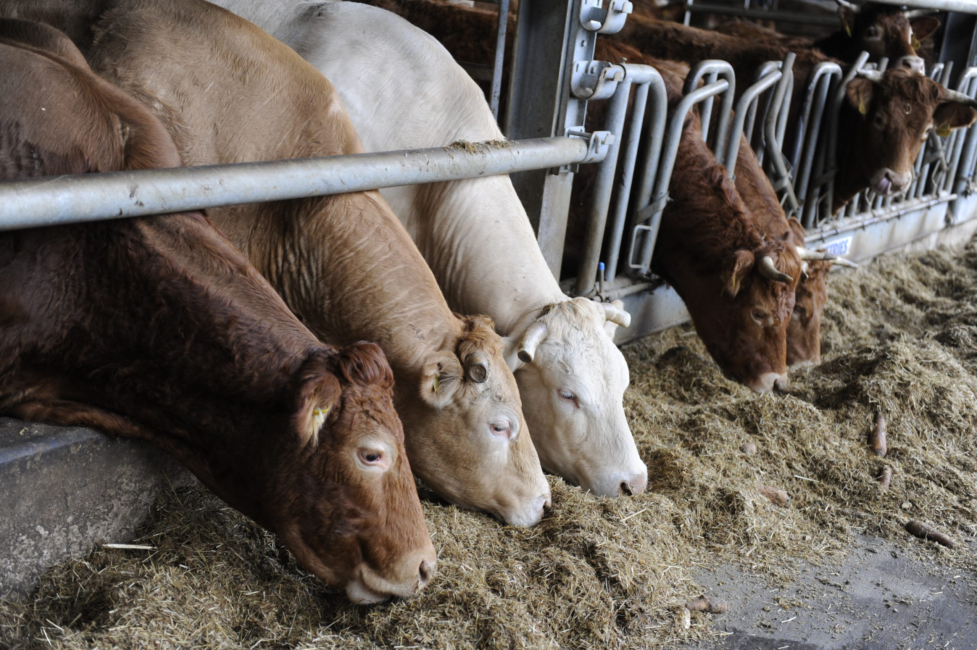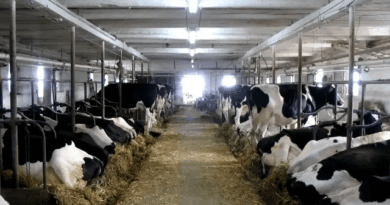Where to Source Ruminant Feeds
Ruminant farmers most times try to find out the recommended place where they can source their feeds. Well as for forages, they are readily available everywhere. However, for concentrates, feed-mills and already existing farmers should be contacted for link.
A good feed formula could be got from your consultant in case you need one. In sourcing your feed however, you must be sure of the quality of the feeds from that source otherwise you will be exposing your animals to diseases.
Meanwhile, Energy and protein sources are of prime importance for ruminants as they stimulate microorganisms in the rumen and enhance the productive functions of the animals.
Cassava roots in the form of dry cassava chips or pellets as energy sources and dried cassava leaves and cassava hay as protein sources have been used successfully in ruminant rations.
These uses of cassava could provide year-round feed which results in a high yield and good quality of milk and contribute to a more lucrative dairy and beef cattle enterprise, especially for small-holder dairy farming systems.
There are many other available feed resources in the tropics of potential use in ruminant feeding and particularly in the development of food-feed-systems that are not only beneficial for human and animals but also for the environment.
Read Also: For how long can Ruminant Animals be starved? Find out
Basic Nutrition of Small Ruminants

Feed is the single largest cost associated with raising small ruminants, typically accounting for 60% or more of total production costs. Nutrition exerts a very large influence on reproduction, milk production, and lamb and kid growth.
Late-gestation and lactation are the most critical periods for ewe and doe nutrition,with lactation placing the highest nutritional demands on ewes/does.
How Nutrition level largely determines growth rate in lambs and kids
Lambs and kids with higher growth potential have higher nutritional needs, especially with regards to protein. Animals receiving inadequate diets are more prone to disease and will fail to reach their genetic potential.
Small ruminants require energy, protein, vitamins, minerals, fiber, and water. Energy (calories) is usually the most limiting nutrient, whereas protein is the most expensive. Deficiencies, excesses, and imbalances of vitamins and minerals can limit animal performance and lead to various health problems.
Fiber (bulk) is necessary to maintain a healthy rumen environment and prevent digestive upsets. Water is the cheapest feed ingredient, yet often the most neglected.
Many factors affect the nutritional requirements of small ruminants: maintenance, growth, pregnancy, lactation, fiber production, activity, and environment.
As a general rule of thumb, sheep and goats will consume 2 to 4 percent of their body weight on a dry matter basis in feed. The exact percentage varies according to the size (weight) of the animal, with smaller animals needing a higher intake (percentage-wise) to maintain their weight.
Maintenance requirements increase as the level of the animals’ activity increases. For example, a sheep or goat that has to travel a farther distance for feed and water will have higher maintenance requirements than animals in a feed lot.
Environmental conditions also affect maintenance requirements. In cold and severe weather, sheep and goats require more feed to maintain body heat. The added stresses of pregnancy, lactation, and growth further increases nutrient requirements.
A sheep or goat’s nutritional requirement can be met by feeding a variety of feed stuffs. Feed ingredients can substitute for one another so long as the animals’ nutritional requirements are being met. Small ruminant feeding programs should take into account animal requirements, feed availability, and costs of nutrients.
Read Also: How to control Ruminants from destroying Grasses where they graze
1. Pasture, Forbs, and Browse Nutrients

Pasture, forbs, and browse are usually the primary and most economical source of nutrients for sheep and goats, and in some cases, pasture is all small ruminants need to meet their nutritional requirements.
Pasture tends to be high in energy and protein when it is in a vegetative state. However, it can have high moisture content, and sometimes it may be difficult for high-producing animals to eat enough grass to meet their nutrient requirements. As pasture plants mature, palatability and digestibility decline, thus it is important to rotate pastures to keep plants in a vegetative state.
During the early part of the grazing season, browse (woody plants, vines and brush) and forbs (weeds) tend to be higher in protein and energy than ordinary pasture.
Sheep are excellent weed eaters. Goats are natural browsers and have the unique ability to select plants when they are at their most nutritious state. Sheep and goats that browse have fewer problems with internal parasites.
2. Hay
Hay is the primary source of nutrients for small ruminants during the winter or non-grazing season. Hay varies tremendously in quality, and the only way to know the nutritional content is to have the hay analyzed by a forage testing laboratory.
Hay tends to be a moderate source of protein and energy for sheep and goats. Legume hays –alfalfa, clover, lespedeza — tend to be higher in protein, vitamins and minerals, especially calcium, than grass hays.
The energy, as well as protein content of hay depends upon the maturity of the forage when it was harvested. Proper curing and storage is also necessary to maintain nutritional quality of hay.
3. Concentrates
It is often times necessary to feed concentrates to provide the nutrients that forage alone cannot provide. This is particularly true in the case of high-producing animals. There are also times and situations where concentrates are a more economical source of nutrients.
Creep feeding and supplemental feeding of lambs and kids has been shown to increase growth weight, but should only be done to the extent that it increases profit.
Read Also: Allowing Ruminants to graze vs providing feeds for them in a confinement, find out which is better
There are two types of concentrate feeds namely: Energy and Proteins, as explained in details below:
a. Energy feeds provide more calories, but tend to be low in protein (8-11%). They include the cereal grains –corn, barley, wheat, oats, milo, and rye. It is not necessary to process grains for sheep and goats unless the animals are less than six weeks of age due to a lack of a functioning rumen.
One of the problems with feeding a lot of cereal grains is that they are high in phosphorus content, but low in calcium. Feeding a diet that is high in phosphorus and low in calcium can cause urinary calculi (kidney stones) in wethers and intact males. The proper calcium to phosphorus ration is 2:1. Inadequate calcium can lead to milk fever (hypocalcemia) in pregnant or lactating ewes/does.
b. Protein supplements contain high levels of protein (>15%) and may be of animal or plant origin. They include soybean meal, cottonseed meal, and fish meal. Ruminant-derived meat and bone meal cannot (by law) be fed to other ruminants, including sheep and goats.
Protein quantity is generally more important than protein quality (amino acid content) in ruminant livestock since the microorganisms in the rumen manufacture their own body protein.
Livestock do not store excess protein; it is burned as energy or eliminated (as nitrogen) by the kidneys. Since parasites often cause blood loss in small ruminants, higher levels of protein in the diet may enable the animal to mount a greater immune response to parasites.
By-product feeds, such as fat, soy hulls, wheat middlings, and broiler litter may contain high levels of various nutrients and can be incorporated into small ruminant diets if they are cost effective. Due to its copper content, it is not recommended that sheep be fed broiler litter for sustained periods of time.
Many feed companies offer complete sheep and/or goat feeds — pelleted or textured — which are balanced for the needs of the animal in a particular production class. Pelleted rations have an advantage in that the animals cannot sort feed ingredients.
While complete sheep feeds have been available for many years, it has only been in recent years, that meat goat rations have been introduced to the market place. Complete feeds come in 50 or 100 lb. sacks and tend to be much more expensive than home-made concentrate rations.
5. Vitamins and Minerals
Many minerals are required by small ruminants. The most important are salt, calcium, and phosphorus. The ratio of calcium to phosphorus should be kept around 2:1 to prevent urinary calculi.
Vitamins are needed in small amounts. Small ruminants require vitamins A, D and E, whereas vitamin K and all the B vitamins are manufactured in the rumen.
A loose, free choice salt-vitamin-mineral premix should be made available to small ruminants at all times, unless a premix has been incorporated into the grain ration or TMR (total mixed ration).
In the very least, ewes and does should be fed pre-choice mineral during late gestation and lactation. High levels of copper can be toxic to sheep.
Goats require a higher level of copper. When sheep and goats are fed together, it is not uncommon to feed a low-copper mineral supplement designed for sheep. This increases the risk for developing copper deficiencies in kids born to does fed basal diets that are low in copper.
It is very unlikely that the same diet can be fed to sheep and goats without risking copper toxicity in the sheep or a copper deficiency in the goats.
6. Water
Small ruminants should have access to clean, fresh water at all times. A mature animal will consume between ¾ to 1 ½ gallons of water per day. Water requirements and intake increase greatly during late gestation and during lactation.
Water requirements increase substantially when environmental temperatures rise above 70 degrees F and decline with very cold environmental temperatures. An animal’s nutrient requirements will increase if it has to consume cold water during cold weather.
Rain, dew, and snowfall may dramatically decrease free water intake. Inadequate water intake can cause various health problems. In addition, water and feed intake are positively correlated.
Read Also: Top 20 Proven Benefits of Ginger Plant









